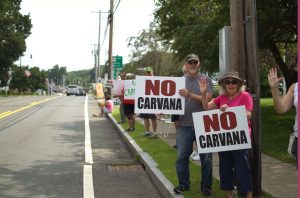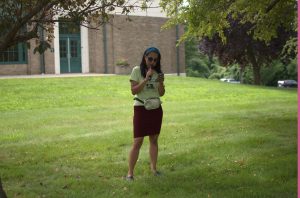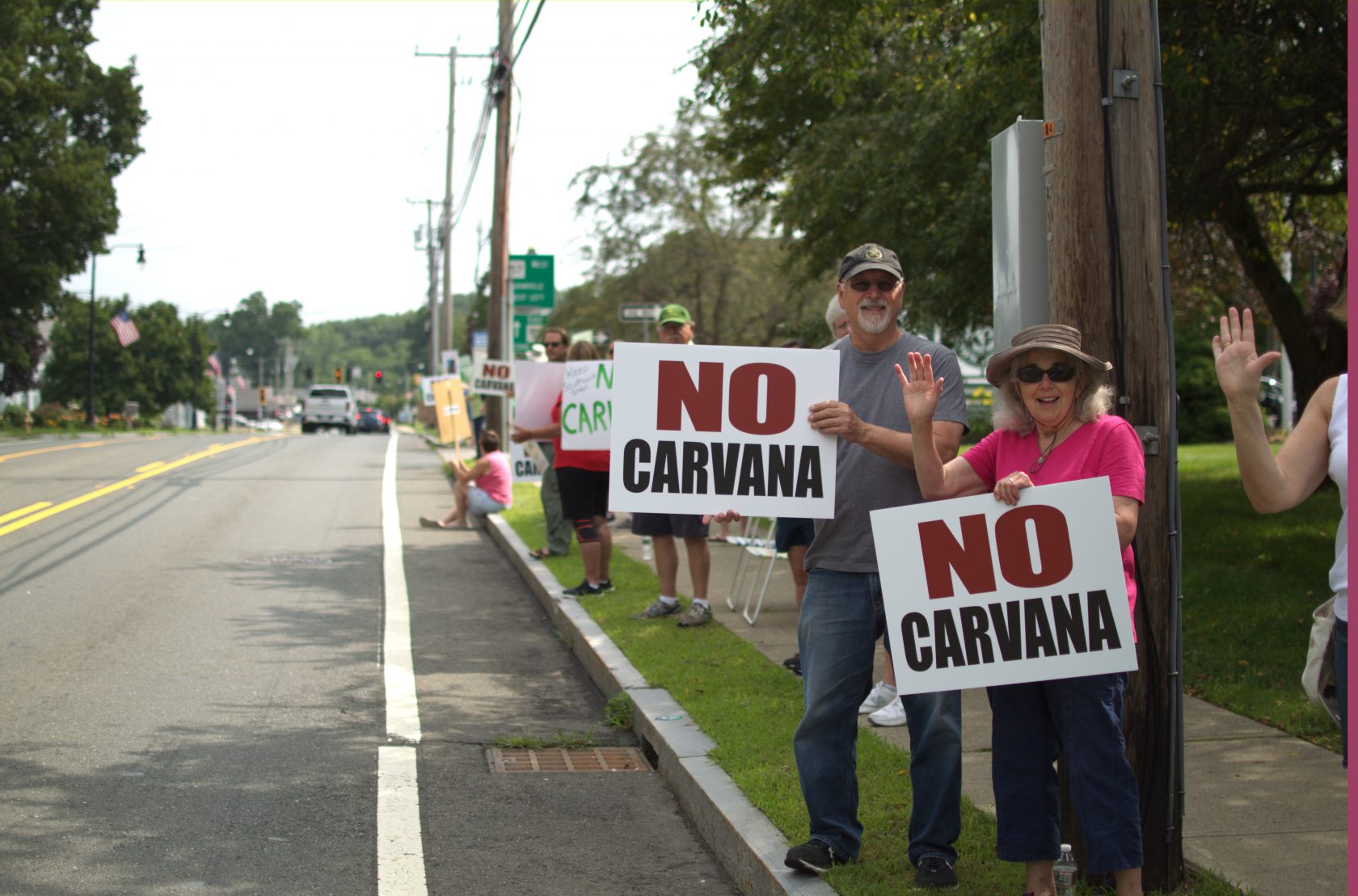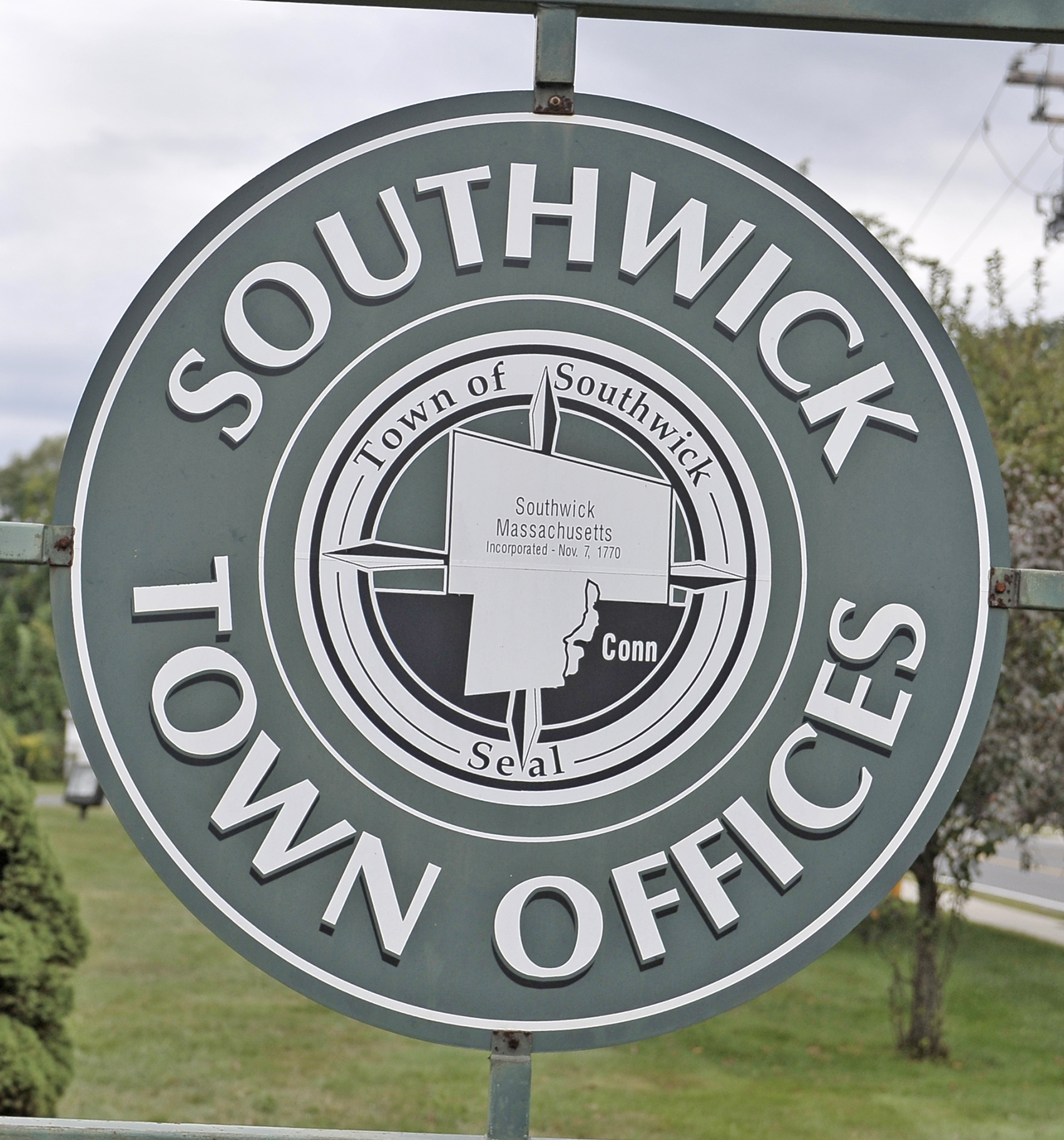
Dozens of opponents of the Carvana project stood in the hot, humid conditions July 17 to protest the Carvana project being considered by the Southwick Planning Board (PETER CURRIER/THE WESTFIELD NEWS)
SOUTHWICK- Dozens of Southwick residents attended a July 17 rally outside of Town Hall in opposition of the proposed Carvana project being considered by the Planning Board.
Residents held signs with messages opposing Carvana, chanted anti-Carvana slogans, and cheered as dozens of vehicles drove by honking their horns in support of the protest.
Supporters stood in the heat for two hours the morning of July 17 ahead of the July 20 Planning Board public hearing on the Carvana project. That hearing will take place at 6 p.m. at the Southwick Regional School auditorium.
The meeting was moved from Town Hall because of the significant number of people expected to attend.
Save Southwick volunteer Maryssa Cook-Obregón spoke during the rally to urge as many people as possible to attend the July 20 hearing. She said that the Carvana project does not comply with the bylaws the Planning Board has to consider when they vote on the project.

Save Southwick volunteer Maryssa Cook-Obregón spoke during the rally and urged as many people to attend the July 20 Planning Board hearing as possible. (PETER CURRIER/THE WESTFIELD NEWS)
“These bylaws exist to uphold our wellness and safety. They are meant to work for us, not against us,” said Cook-Obregón, “It seems unfathomable that the townspeople had to pony up money to hire a legal team to present the board with interpretations of the bylaw.”
She said she expects that the July 20 hearing will not end in a vote, but with a continuation to a fifth meeting at a later date. Planning Board Chair Michael Doherty said July 14 that he expects a continuation because of the amount of people who are expected to speak at the hearing.
The June 29 public hearing went past 11 p.m., and Doherty continued it until July 20.
Cook-Obregón said that she thinks Attorney Tim Ryan, the legal counsel retained by Save Southwick, will speak in opposition of Carvana at the July 20 hearing. After him, Save Southwick members who are opposed to the project will be asked to speak.
“Hopefully the public will drive home the points after that, that we haven’t mentioned or things that you would like to be emphasized,” said Cook-Obregón.
She said that people who oppose the project will be given a “No Carvana” sticker as they walk in the door so that the Planning Board can have a visual of how many people in the room oppose the project. She also asked residents to write “opposed” on the meeting’s sign-in sheet next to their names.
“If they couldn’t see the stickers, then they can see the sign-in sheet afterwards and see that you are opposed, for the record,” said Cook-Obregón.



